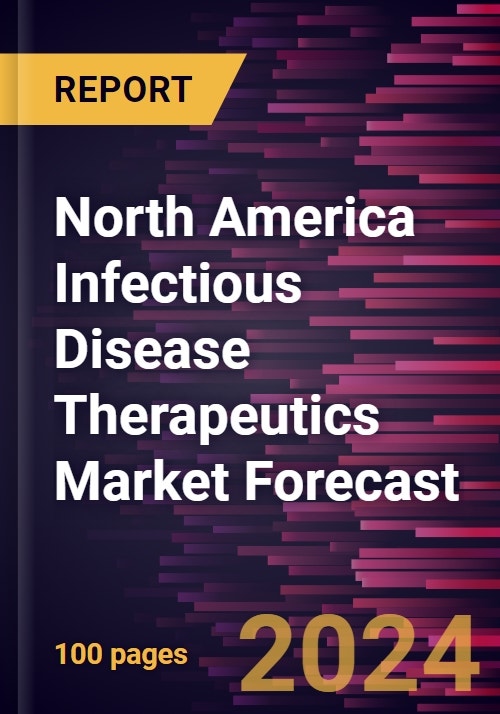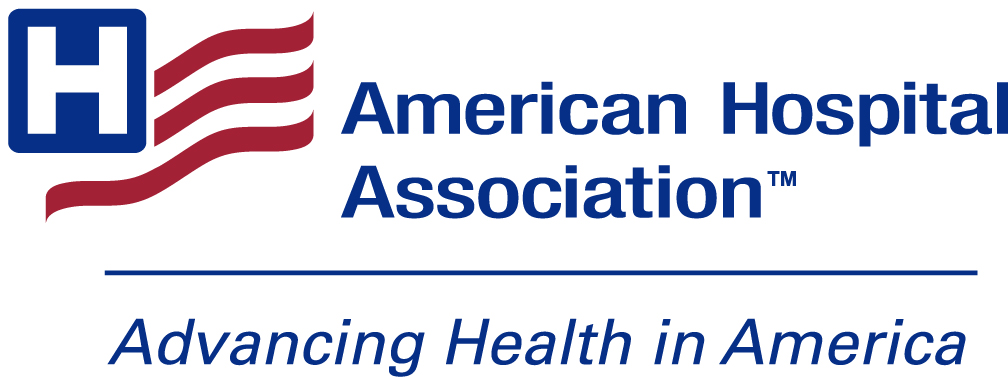Infectious Disease Treatment Market Report 2025-2030 | – GlobeNewswire

Report on the Global Infectious Disease Treatments Market and Alignment with Sustainable Development Goals
A recent market analysis indicates significant growth in the global infectious disease treatments sector, a trend directly aligned with the imperatives of the United Nations’ Sustainable Development Goals, particularly SDG 3: Good Health and Well-being. The market is forecast to expand from $72.5 billion in 2025 to $101 billion by 2030, reflecting a compound annual growth rate (CAGR) of 6.9%.
Market Projections (2025-2030)
- Estimated Market Value in 2025: $72.5 Billion
- Forecasted Market Value by 2030: $101 Billion
- Compound Annual Growth Rate (CAGR): 6.9%
Public Health Context and Contribution to SDG 3
The growth of this market is driven by the persistent global burden of infectious diseases. This directly addresses SDG Target 3.3, which aims to end the epidemics of AIDS, tuberculosis, malaria, and other communicable diseases by 2030. According to the World Health Organization (WHO), these three diseases alone account for half of all deaths from infectious diseases, with the most significant impact in Africa and Southeast Asia. The market’s expansion in therapeutics, vaccines, and diagnostics is critical to achieving this global health objective.
Market Dynamics and Drivers
The market is shaped by ongoing global health challenges and scientific advancements, which underscore the need for continuous investment to meet SDG targets.
Key Market Drivers
- Global Efforts to Combat Infectious Diseases: International initiatives and funding aimed at eradicating major infectious diseases are a primary driver, supporting SDG Target 3.b (support R&D of vaccines and medicines).
- Antimicrobial Resistance (AMR): The growing threat of drug resistance creates a critical need for novel therapeutics and diagnostics, reinforcing the urgency of SDG 3.
- Technological Advances: Innovations in diagnostics and treatment modalities improve health outcomes and access.
- Climate Change and Urbanization: Environmental and demographic shifts contribute to the spread of infectious diseases, necessitating a robust market response.
- Increased Global Travel: The interconnectedness of the global population facilitates the rapid transmission of pathogens across borders.
Market Restraints
Challenges remain in achieving universal access, a cornerstone of SDG Target 3.8 (Universal Health Coverage). These include:
- Pricing Pressures: The high cost of innovative treatments can be a barrier to access in low- and middle-income countries.
- Lack of Awareness and Underdiagnosis: Insufficient public awareness and diagnostic infrastructure lead to delayed treatment and continued transmission.
- Loss of Exclusivity and Genericization: While improving affordability, the entry of generics can reduce incentives for originator R&D investment.
Emerging Trends and Innovations Supporting Global Health Goals
Technological and therapeutic innovations are pivotal in overcoming existing treatment challenges and advancing global health equity.
Transformative Treatment and Diagnostic Approaches
- Long-Acting Injectables: These transformative medicines improve treatment adherence for chronic infections like HIV, a key factor in controlling epidemics as per SDG 3.3.
- Self-Testing Kits: By providing convenient, private, and timely diagnostic options, self-tests empower individuals and support early detection, which is crucial for preventing disease spread and achieving universal health access.
- Combination Therapies: The use of multiple drugs is an essential strategy to combat resistance and improve treatment efficacy, particularly for complex diseases like HIV and tuberculosis.
- Multiplex PCR Testing: This diagnostic technology allows for the simultaneous detection of multiple pathogens, enabling faster and more accurate diagnoses.
Report Scope and Focus Areas
The analysis covers the primary components necessary for a comprehensive public health response to infectious diseases.
Covered Product Segments
- Therapeutics
- Vaccines
- Diagnostics
Covered Infectious Diseases
- Human Immunodeficiency Virus (HIV)
- Influenza (A and B)
- Hepatitis B and C
- Respiratory Syncytial Virus (RSV)
- Tuberculosis (TB)
- Herpes Simplex Virus (HSV)
- Malaria
- Rotavirus
- Viral Hemorrhagic Fevers (e.g., Dengue, Ebola, Zika)
Competitive Landscape and Corporate Responsibility (ESG)
The market is led by key industry players committed to innovation and addressing global health crises. Their strategies are increasingly viewed through an Environmental, Social, and Governance (ESG) lens, which aligns with the broader sustainable development agenda.
Leading Market Participants
- Gilead Sciences, Inc.
- GSK plc.
- Sanofi
- Merck & Co. Inc.
- Pfizer Inc.
- Abbott
- Roche Diagnostics
- Johnson & Johnson Services Inc.
- CSL
- Danaher Corp.
Sustainability and ESG Perspective
The industry’s role in achieving the SDGs is paramount. Key ESG considerations include:
- Global Health Access and Equity: Ensuring that new treatments are accessible and affordable for all populations, especially in developing nations.
- R&D for Neglected Diseases: Investing in research for diseases that primarily affect the world’s poorest, directly supporting SDG Target 3.b.
- Antimicrobial Stewardship: Promoting the responsible use of antimicrobial drugs to preserve their efficacy for future generations.
- Public-Private Partnerships: Collaborating with governments and public health bodies to strengthen health systems, reflecting the spirit of SDG 17: Partnerships for the Goals.
Analysis of Sustainable Development Goals (SDGs) in the Article
1. Which SDGs are addressed or connected to the issues highlighted in the article?
- SDG 3: Good Health and Well-being: This is the primary SDG addressed. The article focuses entirely on the market for treating infectious diseases, which directly contributes to ensuring healthy lives and promoting well-being for all at all ages. It explicitly mentions major global health threats like AIDS, malaria, tuberculosis, and hepatitis.
- SDG 9: Industry, Innovation, and Infrastructure: The article highlights the role of innovation in combating infectious diseases. It discusses “advances in medical science,” “R&D for neglected and emerging infectious diseases,” and “emerging trends” such as “long-acting injectables,” “self-testing kits,” and “combination therapies,” which are all products of industrial and scientific innovation.
- SDG 17: Partnerships for the Goals: The article implicitly and explicitly refers to partnerships. It mentions “Global efforts to combat infectious diseases” and “Collaborations with Public Health Bodies.” The analysis of a global market involving numerous multinational corporations (Gilead, Sanofi, Merck) working to solve a global problem inherently points to the importance of public-private and global partnerships.
2. What specific targets under those SDGs can be identified based on the article’s content?
-
SDG 3: Good Health and Well-being
-
Target 3.3: By 2030, end the epidemics of AIDS, tuberculosis, malaria and neglected tropical diseases and combat hepatitis, water-borne diseases and other communicable diseases.
Explanation: The article directly supports this target by focusing on the treatment market for these specific diseases. It states, “AIDS, malaria and tuberculosis combined are responsible for half of the deaths stemming from infectious diseases.” It also covers treatments for “HIV,” “hepatitis B,” “hepatitis C,” “malaria,” and “viral hemorrhagic fevers such as yellow fever, dengue, Lassa fever, Ebola fever, and Zika fever.” -
Target 3.b: Support the research and development of vaccines and medicines for the communicable and non-communicable diseases that primarily affect developing countries…
Explanation: The article’s core subject is the market for “infectious disease therapeutics, vaccines, and diagnostics.” It highlights the need for “continuous investment and innovation” and discusses “R&D for neglected and emerging infectious diseases.” It also notes that “Africa and Southeast Asia bearing the most significant burden,” which aligns with the target’s focus on diseases affecting developing countries.
-
Target 3.3: By 2030, end the epidemics of AIDS, tuberculosis, malaria and neglected tropical diseases and combat hepatitis, water-borne diseases and other communicable diseases.
-
SDG 9: Industry, Innovation, and Infrastructure
-
Target 9.5: Enhance scientific research, upgrade the technological capabilities of industrial sectors in all countries…encouraging innovation and substantially increasing…public and private research and development spending.
Explanation: The article details market growth driven by “advances in medical science” and “technological advances.” It identifies “transformative innovations” like “long-acting injectables and antivirals,” “self-testing kits,” and “multiplex PCR testing.” The projected market growth to “$101 billion by the end of 2030” reflects a substantial increase in private R&D spending.
-
Target 9.5: Enhance scientific research, upgrade the technological capabilities of industrial sectors in all countries…encouraging innovation and substantially increasing…public and private research and development spending.
-
SDG 17: Partnerships for the Goals
-
Target 17.17: Encourage and promote effective public, public-private and civil society partnerships…
Explanation: The report’s scope includes an analysis of “Collaborations with Public Health Bodies.” The entire ecosystem described, involving private companies like “Gilead Sciences, Sanofi, GSK plc, Pfizer,” and their work on global health issues that are priorities for public bodies like the WHO, is a clear example of the public-private partnerships this target aims to promote.
-
Target 17.17: Encourage and promote effective public, public-private and civil society partnerships…
3. Are there any indicators mentioned or implied in the article that can be used to measure progress towards the identified targets?
- For Target 3.3 (End Epidemics): The article provides qualitative indicators by listing the specific diseases being targeted by new treatments (HIV, TB, Malaria, Hepatitis, etc.). It also gives a baseline metric of disease burden by stating that “AIDS, malaria and tuberculosis combined are responsible for half of the deaths stemming from infectious diseases.” A reduction in this figure would indicate progress.
- For Target 3.b (Support R&D): The article provides clear financial indicators. The projected growth of the “global market for infectious disease treatments…from $72.5 billion in 2025…to $101 billion by the end of 2030” serves as a direct indicator of financial resources being mobilized for the R&D and distribution of medicines and vaccines.
- For Target 9.5 (Enhance Research and Innovation): The development and market adoption of “new drugs and innovations” mentioned in the article, such as “long-acting injectables,” “self-testing kits,” and “combination therapies,” serve as tangible indicators of technological progress and innovation in the industry. The market’s “compound annual growth rate (CAGR) of 6.9%” is a quantitative indicator of increasing investment in this sector.
- For Target 17.17 (Promote Partnerships): The mention of “Collaborations with Public Health Bodies” and the listing of numerous “leading companies” working in this space are qualitative indicators of existing partnerships. The report itself, which analyzes the “competitive landscape” and “strategic alliances,” measures the state and effectiveness of these partnerships.
4. Table of SDGs, Targets, and Indicators
| SDGs | Targets | Indicators Identified in the Article |
|---|---|---|
| SDG 3: Good Health and Well-being |
3.3: End the epidemics of AIDS, tuberculosis, malaria, and combat hepatitis and other communicable diseases.
3.b: Support the R&D of vaccines and medicines for communicable diseases, particularly affecting developing countries. |
– List of diseases targeted for treatment (HIV/AIDS, TB, Malaria, Hepatitis, RSV, Dengue, Ebola, Zika). – Statistic on disease burden: “AIDS, malaria and tuberculosis combined are responsible for half of the deaths stemming from infectious diseases.” – Market value of treatments as a proxy for R&D investment: projected to reach $101 billion by 2030. |
| SDG 9: Industry, Innovation, and Infrastructure | 9.5: Enhance scientific research and upgrade technological capabilities, encouraging innovation and increasing R&D spending. |
– Mention of specific technological advances: “long-acting injectables,” “self-testing kits,” “combination therapies,” “multiplex PCR testing.” – Financial indicator of investment in innovation: Market CAGR of 6.9%. |
| SDG 17: Partnerships for the Goals | 17.17: Encourage and promote effective public, public-private and civil society partnerships. |
– Mention of “Collaborations with Public Health Bodies.” – List of private sector partners involved in global health efforts (Gilead Sciences, Sanofi, Merck, Pfizer, etc.). – Analysis of “strategic alliances” in the competitive landscape. |
Source: finance.yahoo.com

What is Your Reaction?
 Like
0
Like
0
 Dislike
0
Dislike
0
 Love
0
Love
0
 Funny
0
Funny
0
 Angry
0
Angry
0
 Sad
0
Sad
0
 Wow
0
Wow
0












































































